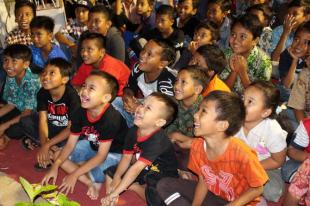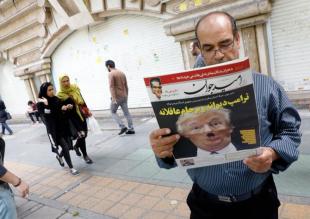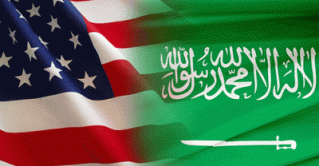DIGITAL ARTICLE | COMMENTARIES by: Debalina Ghoshal
The first week of September 2014 saw reports floating in from sources such as the Ria Novosti[1] news agency and The Moscow Times[2] newspaper that Russia was seeking to amend the nuclear posture outlined in the 2010 Military Doctrine - one of the main strategic planning documents for the defense of the federation.
According to the doctrine, “Russia reserves the right to use nuclear weapon in response to the use of nuclear or other weapons of mass destruction against it or its allies, or in case of use of regular weapon, which threatens the existence of the entire state [of Russia].”[3]
Although Russia did not mention it specifically, analysts predicted that the Russians had adopted a ‘preventive’ nuclear doctrine,[4] one that resorted to dealing with nuclear weapons against distant or illusionary threats. [5] However, former Russian Chief of General Staff, General Yury Baluyevsky, clarified in 2014 that Russia does not and cannot presuppose preventive nuclear strikes, that the 2010 doctrine does not mention the word ‘preventive,’ and that the use of nuclear weapons is only retaliatory as given in Article 22 of the doctrine.[6]
That said, the doctrine does include that its provisions could undergo transformation should there be a change in the military situation, which could threaten the security of Russia, and there is little doubt that Russians believe that the threat environment has changed considerably since 2010.[7]
In September 2014, reports came in that Russia believes its nuclear weapons are the main component of its security strategy, and the need for a ‘pre-emptive’ nuclear doctrine[8] premised on the belief that it has the “right to use nuclear weapons in a defensive posture.”[9]
A ‘pre-emptive’ nuclear doctrine means that the state realizes the importance of responding to imminent threats[10] which for Russia at present is the United States and NATO. Both preventive and pre-emptive nuclear doctrines require that the state should adopt a ‘first-strike’ policy. In addition to the plan for adopting a ‘pre-emptive’ nuclear doctrine, Russian Army General Yury Yakubov, has also suggested “hash[ing] out” those conditions under which Russian Strategic Rockets Forces could resort to the doctrine.[11]
However, in December 2014, reports suggested that Russia’s renewed draft of the doctrine “would not have a reservation for preventive nuclear strikes on potential enemies”, though there was no mention of the option of pre-emption.[12]
Reports suggested that the decision to seek an amendment of the military doctrine has been taken following the decision by NATO to deploy its troops permanently in countries bordering Russia including like Poland and Romania.[13]
Also of concern is Russia’s Cold War adversary, the US,[14] which has its own ‘pre-emptive’ nuclear doctrine, [15] and hence, the Russians would feel the change is the best counter to this.
Reports also suggested that Russia’s move was a reaction to the missile defense system being deployed in Europe (the European Phased Adaptive Approach). The Ukrainian crisis is also seen as a motivating factor[16] with Russia feeling vulnerable to US influence in the Baltic region. [17] The Ukrainian crisis has led to military expansion of NATO forces in Europe, a strategy unacceptable to the Russians, and it is also concerned about NATO’s “Readiness Action Plan” which will establish military bases in Eastern Europe and a rapid response force against Russian forces.[18]
Another vital reason could be the US decision on implementing the Russian Aggression Prevention Act (RAPA) under which it could grant NATO membership status to non-NATO such as the Ukraine, Moldova and Georgia, which could give the US access to “large amounts of military equipment and forces… without the need for approval of other NATO member states.”[19] Not to forget, Moscow is also apprehensive of the US strategy of ‘Prompt Global Strike’ in which the US plans to develop weapon systems which could reach any target in the world in less than one hour.
Resorting to an alteration of its nuclear doctrine is not new in Russia’s strategic planning and decision-making process. In 1993, under its Principle Guidance on the Military Doctrine of the Russian Federation, it assigned the role of nuclear weapons to “remove the threat of nuclear war by deterring its initiation against the Russian Federation and its allies.”[20] Hence, in the 1990s, Russia dropped its Soviet era ‘no-first use’ doctrine slowly and steadily as nuclear weapons was considered as “deterrence of limited conventional wars.”[21]
The policy stated that Russia would use nuclear force against any state party to the Non Proliferation Treaty (NPT) if the state was an ally of the US and was in armed conflict with Russia or its allies. [22]
Russia has also adopted a ‘de-escalation’ policy, which means that if it is faced with a large-scale conventional attack from the NATO which exceeded its own conventional capability, then it could resort to a limited nuclear strike against NATO in order to negate the disadvantages Russia faces in terms of its conventional capability viz-a-viz NATO. This strategy was adopted by Russia as there was a realization that the US and NATO’s conventional capabilities were far superior to its own, and could result in US interference within its borders. In future, there is the chance of this sort of de-escalation in the Ukraine also.
This threat becomes more pertinent for the US and NATO states as reports confirm that Russia is deploying its tactical nuclear weapons (Iskander) in the Kalingrad region[23] bordering Latvia, Lithuania, and Estonia and Poland. This has raised concerns within these Baltic States as, in the 1990s, Russia pledged to not deploy nuclear weapons in the Baltic region.[24]
In addition to this, Russia is prohibited from developing and deploying such ground launched nuclear capable missile systems within the range of 500-5500 km under the Intermediate Range Nuclear Forces (INF) Treaty.
At present, it looks like Europe has become a nuclear flashpoint zone. Hence, it could be conducive if a bilateral nuclear ‘no-first use’ agreement is signed between NATO and Russia and between the US and Russia similar to the bilateral ‘no-first use’ agreement between Russia and China.
Secondly, Russia needs to be brought into the US missile defense shield plan in Europe, the European Phased Adaptive Approach. This could reduce Russia’s apprehensions regarding the shield, which it believes is being fielded to negate its nuclear deterrent under the disguise of countering ballistic missile threats from Iran.
Even though, the Russians have stopped short of including the option of ‘pre-emption’ in their new military doctrine, it remains to be seen if in future they will completely reject the option of ‘pre-emption’ in their military doctrine.
Debalina Ghoshal is an Associate Fellow at the Centre for Air Power Studies, New Delhi.
[1] “Russia’s Modified Military Doctrine Not Providing for Preventive Nuclear Strike,” Ria Novosti, September 5, 2014 at http://en.ria.ru/military_news/20140905/192676390/Russias-Modified-Military-Doctrine-Not-Providing-for-Preventive.html
[2] “Russian General Calls for Preemptive Nuclear Strike Doctrine Against NATO,” The Moscow Times, September 3, 2014 at http://www.themoscowtimes.com/business/article/russian-general-calls-for-preemptive-nuclear-strike-doctrine-against-nato/506370.html
[3] “Russia’s Modified Military Doctrine Not Providing for Preventive Nuclear Strike,” Ria Novosti, September 5, 2014 at http://en.ria.ru/military_news/20140905/192676390/Russias-Modified-Military-Doctrine-Not-Providing-for-Preventive.html
[4] “Is Russia Adopting Nuke 1st Strike,” WND, February 2, 2014, at http://www.wnd.com/2010/02/126343/
“Russia to adopt first strike nuclear policy,” Space War, October 14, 2009, at http://www.spacewar.com/2006/091014092422.51lc7o2y.html
[5] http://www.utimes.pitt.edu/?p=283
[6] “Russia’s Modified Military Doctrine Not Providing for Preventive Nuclear Strikes, Sputnik News, September 5, 2014 at http://sputniknews.com/military/20140905/192676390/Russias-Modified-Military-Doctrine-Not-Providing-for-Preventive.html
[7] “Russia to change its nuclear doctrine in light of NATO’s growing aggression,” Pravda.ru, September 2, 2014 at http://english.pravda.ru/russia/kremlin/02-09-2014/128427-russia_nato_doctrine-0/
[8] Sean Piccoli, “Russian General Sees Nuclear First-Strike Option Against Us,” Newsmax, September 4, 2014 at http://www.newsmax.com/Newsfront/Russian-pre-emptive-nuclear-strike/2014/09/04/id/592739/
[9] “Russian General Calls for Preemptive Nuclear Strike Doctrine Against NATO,” The Moscow Times, September 3, 2014 at http://www.themoscowtimes.com/business/article/russian-general-calls-for-preemptive-nuclear-strike-doctrine-against-nato/506370.html
[10] http://www.utimes.pitt.edu/?p=283
[11] Sean Piccoli, “Russian General Sees Nuclear First-Strike Option Against Us,” Newsmax, September 4, 2014 at http://www.newsmax.com/Newsfront/Russian-pre-emptive-nuclear-strike/2014/09/04/id/592739/
[12] “Preemptive nuclear strike omitted from Russia’s new military doctrine-reports,” RT.com, December 10, 2014,
[13] “New Russian Military Doctrine in Light of NATO Threats,” Prensa Latina, September 3, 2014, at http://www.plenglish.com/index.php?option=com_content&task;=view&id;=3046941&Itemid;=1
[14] Tyler Burden, “Russian General Demands Pre-emptive Nuclear Strike,” Zero Hedge, September 4, 2014 at http://www.zerohedge.com/news/2014-09-04/major-escalation-russian-general-demands-preemptive-nuclear-strike-doctrine-against-
[15] “U.S. changes nuclear strategy to first strike: Analyst,” Press TV, June 18, 2014, at http://www.presstv.in/detail/2014/06/18/367536/us-shifts-nuclear-strategy-to-first-strike/
[16] “Russian General Calls for Preemptive Nuclear Strike Doctrine Against NATO,” The Moscow Times, September 3, 2014 at http://www.themoscowtimes.com/business/article/russian-general-calls-for-preemptive-nuclear-strike-doctrine-against-nato/506370.html
[17] “Russia to adjust military doctrine due to NATO expansion, Ukrainian crisis,” RT.com, September 2, 2014.
[18] Mathew Bodner, “Russia Hardens Military Thinking As NATO Fizzes Over Ukraine,” The Moscow Times, September 7, 2014, at http://www.themoscowtimes.com/business/article/russia-hardens-military-thinking-as-nato-fizzes-over-ukraine/506570.html
[19] Steven Starr, “The Russian Aggression Prevention Act: (RAPA): A Direct Path to Nuclear War with Russia,” Global Research, August 22, 2014, at http://www.globalresearch.ca/the-russian-aggression-prevention-act-rapa-a-direct-path-to-nuclear-war-with-russia/5397171
[20] Dale R. Herspring, “Russian Nuclear and Conventional Weapons: The Broken Relationship,” in ed., Stephen J. Blank, Russian Nuclear Weapons: Past, Present and Future (United States: Strategic Studies Institute Book, 2011).
[21] Nikolai Sokov, “Russia’s Nuclear Doctrine,” NTI, August 1, 2004 at http://www.nti.org/analysis/articles/russias-nuclear-doctrine/
[22] Yury E. Federov, “Russia’s Nuclear Policy, NIDS, at http://www.nids.go.jp/english/event/symposium/pdf/2009/e_04.pdf
[23] Nikolai Sokov, “A Second Sighting of Russian Tactical Nukes in kaliningrad,” James Martin Centre for Nonproliferation Studies, February 15, 2011 at http://cns.miis.edu/stories/110215_kaliningrad_tnw.htm
[24] Debalina Ghoshal, “In westernmost Russia, a tactical nuclear base emerges as a threat to NATO countries,” Global Post, May 6, 2014 at http://www.globalpost.com/dispatches/globalpost-blogs/commentary/westernmost-russia-tactical-nuclear-base-emerges-threat-nato-
 English to re-enter Indonesian classrooms
English to re-enter Indonesian classrooms  New Delhi's real worry: Trump's unpredictability on Iran
New Delhi's real worry: Trump's unpredictability on Iran  Missile defense dilemma for Saudi Arabia
Missile defense dilemma for Saudi Arabia